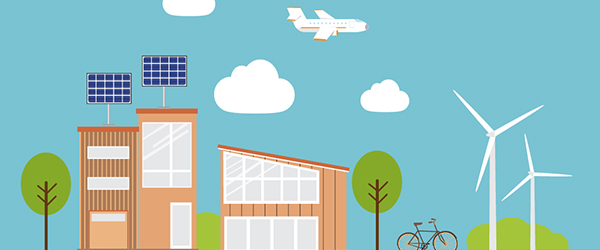5 Common Green Energy Myths – BUSTED

The 21st century has brought a lot of really cool stuff to the world. Nearly everything is virtual and digital; we can binge watch our favorite television shows without being bombarded by a stream of pointless commercials; and we can download our grocery list from our refrigerator straight to our smartphone.
We are also in the middle of a transitional period in the energy industry – finding ourselves suspended between fossil fuel dependency and a future controlled by renewable energy sources. With so much newness and uncertainty in the renewables space, a number of myths and misconceptions have come about. And while concerns are understandable, there are some that are just outright wrong. Here are a few of our favorites to disprove:
MYTH: If the wind doesn’t blow or the sun isn’t shining, I won’t have power.
There are a few things wrong with this statement. Sunshine and wind are incredibly predictable, so we have a very good idea of where and when the sun shines and where and when the wind blows. This planning, coupled with modern technologies, like advanced batteries, real-time pricing, and smart appliances, ensures that solar and wind enhance grid reliability.
MYTH: The upfront cost of renewable energy isn’t worth it in the long run.
Though solar and wind energy construction can be perceived as a risky investment, the cost over the lifespan can be the least expensive energy-generating source. The cost (before tax credits that would further drop the costs) of wind power cost $30-60 per megawatt-hour (a measure of energy), and large-scale solar cost $43-53/MWh. For comparison: energy from the most efficient type of natural gas plants cost $42-78/MWh; coal power cost at least $60/MWh. Additionally, the capital costs of renewable energy have significantly fallen – an 80 percent decrease in the last 10 years. Plus, according to recent studies, the payback time is shrinking.
MYTH (sort of): If I drive electric, I’m saving the planet.
While you are certainly reducing the emissions your car produces, you could still have a pretty significant carbon footprint if you are charging your vehicle with electricity generated from coal. Consider a green electricity product from suppliers (like IGS Energy) that allows you to lock in a rate and make sure you’re powering up with renewable power.
MYTH: I have to install solar panels to feel the benefits of renewable energy.
While installing your own solar panels has its own benefits, companies (like IGS Energy) are offering green and renewable products that allow you to supply your electricity and natural gas with renewable products.
MYTH: There’s no way to know how much of my supply comes from renewable energy.
TRUE, but it’s bigger than that. Think of the electric grid as a lake. This lake is fed by many different water sources – some originating in the mountains from glaciers, others coming from springs or rainwater, and some from the city’s water treatment plant. The water mixes together in the lake and there’s really no way to determine where a single molecule of water came from. A cup of water from the lake has a probability of containing some water from each source. Electricity flows to the grid in a similar way. The grid is supplied by a variety of sources – some that produce more pollution than others. Once in the grid, the electricity that flows to homes and businesses is considered to be a mix of all sources of generation. When you enroll in a go green product from IGS Energy, we’ll make sure that for every kWh of electricity you use, a kWh from a renewable source is put on the grid, reducing the amount of energy generated from non-renewable fossil fuels. Bottom line: The more energy being generated with renewable resources, the less demand there is for energy generated by fossil fuels.
We’re doing our part to take care of the planet.
Renewable energy is the future. IGS Energy’s go greenTM products give you an easy and affordable way to support energy initiatives that embrace all forms of domestic energy production while expanding existing conservation efforts.
Learn more about our green energy options